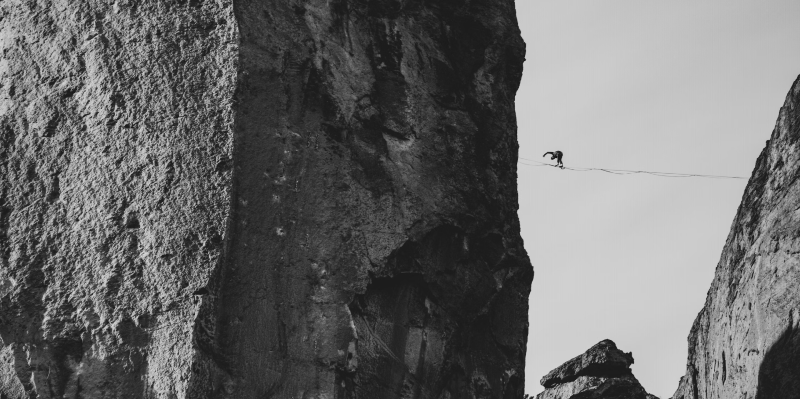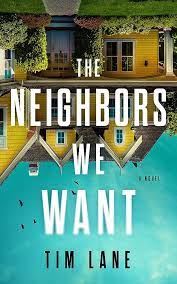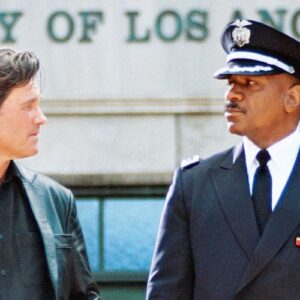I’ve been a stay-at-home dad for six years now and I could tell you horror stories. I’ve changed diapers on gas station bathroom floors that should have been condemned. I’ve caught my babies picking up the most vile things in city parks. There are events with Roombas and couch cushions and Cheerios that would live forever in your nightmares. Any stay-at-home parent has these stories. It comes with the territory of shepherding little humans through a world that mainly prefers to see them, not hear. I’ve lost my cool, I’ve raised my voice, and once, in a fit of desperation, as I tried to get a stubborn four-year-old to put on his shoes, I ate a mouthful of licorice in front of his disbelieving eyes.
I then refused to share.
The experience felt alienating; I felt like a monster. Then a funny thing happened. As I settled into my role as a SAHD (the “h” is silent) while the rest of the world shut down for COVID, I found myself turning to thrillers. Here people were driven to much worse behavior than me. Characters pushed into extremes that helped exorcize some of my own feelings of frustration and ineptitude that whirled like fidget-spinners in my chest. I loved these weirdos. I needed these frazzled split end people.
And the best ones, for my money, are those who aren’t all that bad at all—at least in their own minds. They believe that what they are doing is right, justified, defensible, or at the very least, beyond their control.
Before becoming a stay-at-home dad, I considered myself too much of a wimp to read thrillers. My overactive monkey brain would latch onto a bloody description and I’d lose days to obsessive thoughts. But then I found Gone Girl by Gillian Flynn in a little free library. I dipped in, and a day later found myself dizzy and muttering about the twists and turns. Nick Dunne’s befuddled suspicion that something was not right wobbled like a struck saw through the first half of the book, but the iconic twist at the middle, when Amy Dunne takes control, took a bow to the blade and played me. While Amy isn’t particularly interested in measuring morality beyond a tally sheet, what she does hold is an undeniable roadmap to every one of her actions. While it takes a rare person to ever even try to do what she did to take control of her life, I found it comforting to see someone’s least charitable impulses wired in neon for me to gawk at. Amy wasn’t bad for bad’s sake, she acted in a way that was, to her, entirely rational.
From there, I needed more thrillers, more insidious twists, more plot, more, more, more. In The Witch Elm by Tana French and Big Little Lies by Liane Moriarty those committing the murders are actually the good guys. In each of these novels, the heroines are pushed to the extreme by tormentors until they can no longer take it. Then they push back. Though most of us would put murder at the top of the list of cardinal offenses, the great authors can have us downright rooting for our protagonist to just do it already.
I also found that the through-line from motivation to action needn’t be so foggy. Bad guys can be grandiose and downright plodding, but for it to come together, for me, I have to be able to attach a why. Otherwise, I risk seeing them as a cartoon. In Agatha Christie’s And Then There Were None, the murderer, Judge Wargrave, is as calculating as the worst of them, but what extends enough credit for me to want to keep reading is that he believes his actions to be punishing those who’ve gotten away with something terrible. A dubious and cursed set of scales, to be sure, weighted heavily by his own twitchy finger, but we follow the logic and find ourselves peering through the keyhole into his heart.
In The Jealous Kind by James Lee Burke, a gravel-chewing dance with 1950’s Houston subculture, there isn’t an untarnished soul in the whole lot. Every single character in the book behaves badly, but none of them do it because they are evil. This is a cast that feels hurt by the world, and so alive to us. Their circumstances are authored by each other, and as one pulls, they each feel tightened in the net, bringing them closer and closer to actions they will spend the rest of their lives living down.
Meanwhile, Donna Tartt shows her cards straight away in The Secret History. From the very first, we learn about the murder of a college student at the hands of his best friends. The rest of the book is a masterclass in detailing how, exactly, it could possibly come to this. Over hundreds of pages we are guided, step by step, in tighter, more claustrophobic circles until we can, if not empathize with the act of murder, at least intuit the path to getting there. Tartt gives us no choice but to be implicated, and this is chilling. It shatters the barrier we maintain. We are like this; they are like that.
This inspired me. I wanted to write a book with characters that all believed they were right and wronged. In The Neighbors We Want there is a stay-at-home dad who will do anything to save his marriage, a teacher learning the hardest lesson of her life, and a love-struck kid who got too wrapped up in circumstances that spin out of their control. While I would never do what any of my characters resort to, it was important that I could see why they did.
The thing I love most about thrillers is the prickle-of-teeth-against-your-skin suspicion that the bad guys aren’t so different from us in the end. After all, what’s scarier than the monster at the door? The fear that it’s already inside the house; that it’s in fact, you.
***


















